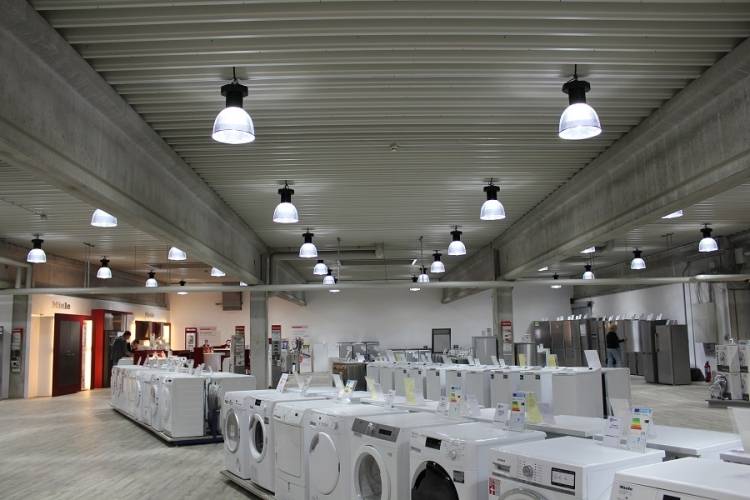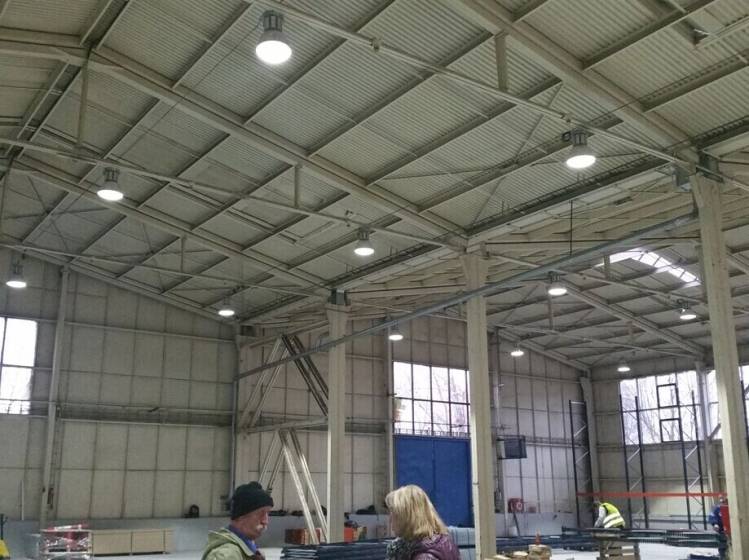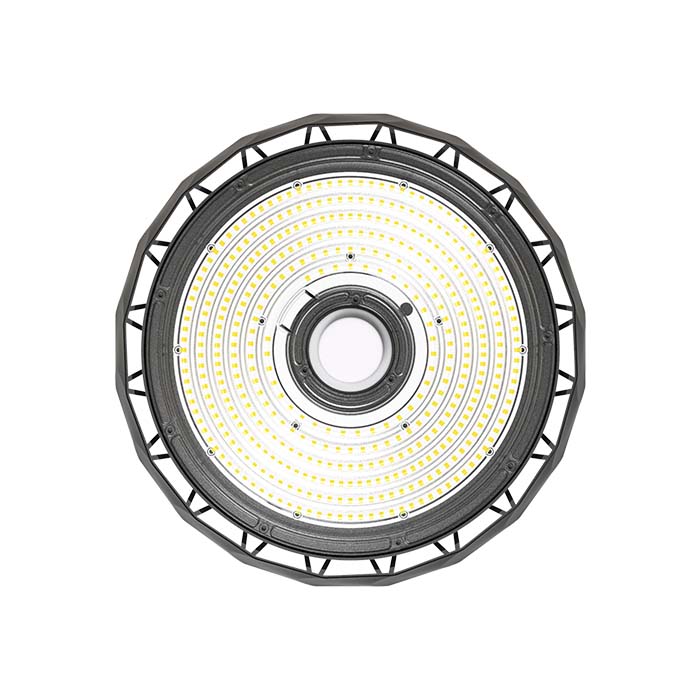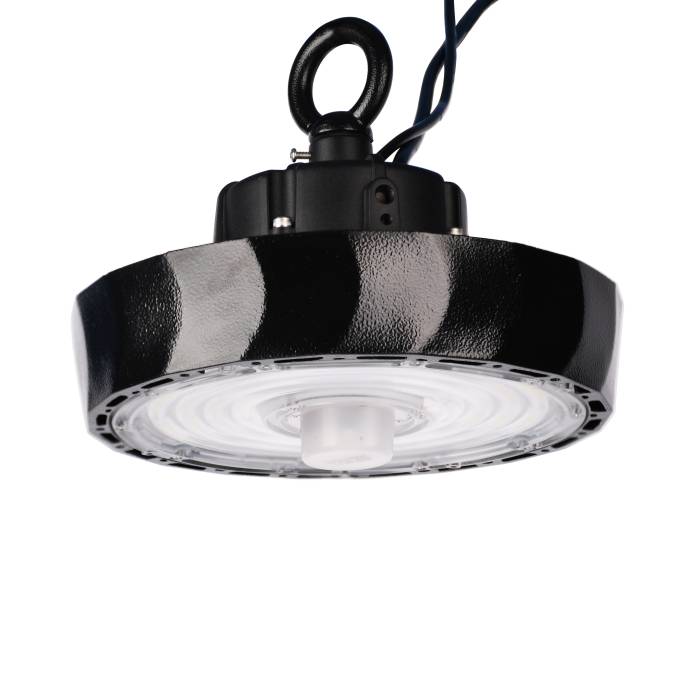In the lighting industry, LED high bay lights are very suitable for working environments that require bright and uniform lighting. Suitable for ceilings higher than 14 feet. Can provide clear, uniform lighting, and no glare. They are ideal for municipal facilities, community centers, warehouses, department stores, stadiums, manufacturing areas, and store halls.
What is a motion sensor LED high bay light?
With the advent of the 5G intelligent era of the Internet, all walks of life are developing in the direction of intelligence, which is the future trend. Product functions are becoming more and more intelligent, without manual operation, more convenient and more energy-saving. The motion sensor LED high bay light has a built-in motion detector, which can intelligently sense the surrounding environment. When there is no one, it is closed, and it is automatically turned on when there is someone. It does not require people to operate. Convenient, and there is no need to worry about someone forgetting to turn off the lights and consume power. Compared with manual switches, motion-sensitive LED high bay lights can save energy and reduce energy consumption by up to 35%.
LED high bay light sensor options
One is: microwave sensor
The sensor uses microwave technology to analyze the environment. The detector establishes a baseline by calculating the distance to a stationary object in the detection area. Echo time refers to the time it takes for the microwave signal of the motion sensor to return. The motion sensor uses baseline analysis to detect whether the current distance of a stationary object meets expectations.
When a person enters the room, they will destroy the microwave signal, and the echo time received by the motion detector will change. Then the microwave sensor detects the movement, and the microwave sensor detects the movement in less than one microsecond, and the LED high bay light turns on.
The second is: passive infrared sensor
The motion detector uses passive infrared technology. The environment is analyzed, and the PIR sensor looks for changes in current thermal characteristics. Perform room analysis to detect any heat signatures present in the room and then return to normal state.
When someone enters the room in the sensor detection area, the heat signal will change, and the PIR sensor will detect this change.
PIR sensors are most suitable for long distances. Microwave detectors are accurate because waves can pass through walls. With microwave sensors, you can even turn on the lights before you get there.
Regarding LED high bay lights, we should also pay attention to the following points:
Wattage, lumens
Wattage and lumens are an important consideration. For LED high bay lights, the wattage is a measure of the energy used. On the other hand, brightness is measured in lumens. Different lumens are suitable for different heights. For lamps 10-15 feet tall, you should have 10000-15000 lumens. For industrial lamps of 15-20 feet, the appropriate brightness should be between 16000 and 25000 lumens. For ceiling heights between 25 and 35 feet, the brightness should be higher than 36,000 lumens.
High lumens make the efficiency higher. The efficiency of LED high bay lights describes the energy consumed to produce a certain amount of visible light. High-efficiency LED high bay lights will consume several watts to produce higher lumen output. Although the initial cost of low-efficiency LED high bay lights may be lower, they will be expensive in the long run.
Color temperature
We use the Kelvin scale to measure the light temperature of LED high bay lights. The higher numbers on the scale indicate warm yellow light, while the lower numbers indicate cool blue light. For home use, 3500K-5000k is the best choice. The color temperature range of LED high bay lights is 2700K-7000K.
If you are looking for a warm and attractive appearance, a color temperature of 4000K is the most suitable. 5000K emits daylight white color and is an ideal choice for replacing metal halides. Above 5000K, the light may be too dazzling and may cause headaches and eye problems.
Beam angle
The LED high bay light emits a beam of light when it is turned on. The beam angle refers to the spread of the light emitted by the LED on the floor. The beam angle of LED high bay lights is an important consideration. The correct beam spread will ensure that you get enough lighting and atmosphere. Common beams are 60D, 90D and 120D. 120 degrees is the most commonly used. When choosing the correct beam angle, the ceiling height is an important consideration: 120D is generally used at 4-9 meters high, 90D is used at 8-11 meters high, and 60D is used at 12-15 meters high.
Narrow beam angle 60D-Provides concentrated lighting suitable for task lighting, and is most suitable for lighting high ceiling areas.
Medium beam angle 90D provides medium diffused light, suitable for softer spotlight illumination.
The wide beam angle of 120D can provide good light diffusion in a bright room.
Under the same ceiling height, the brightness of 120D will be lower than that of narrow beam lamps. Since narrow beam angle lights provide more concentrated lighting, you should use them for high ceilings.
The technology of LED high bay lights is becoming more and more mature and the market is becoming wider and wider. Many factories will set up and match according to their own standards and then sell them. In the process of purchasing, consumers must consider whether the price is cheap or not, but also whether the cheap price performance is good, and comprehensive consideration of all aspects can make a better choice.






